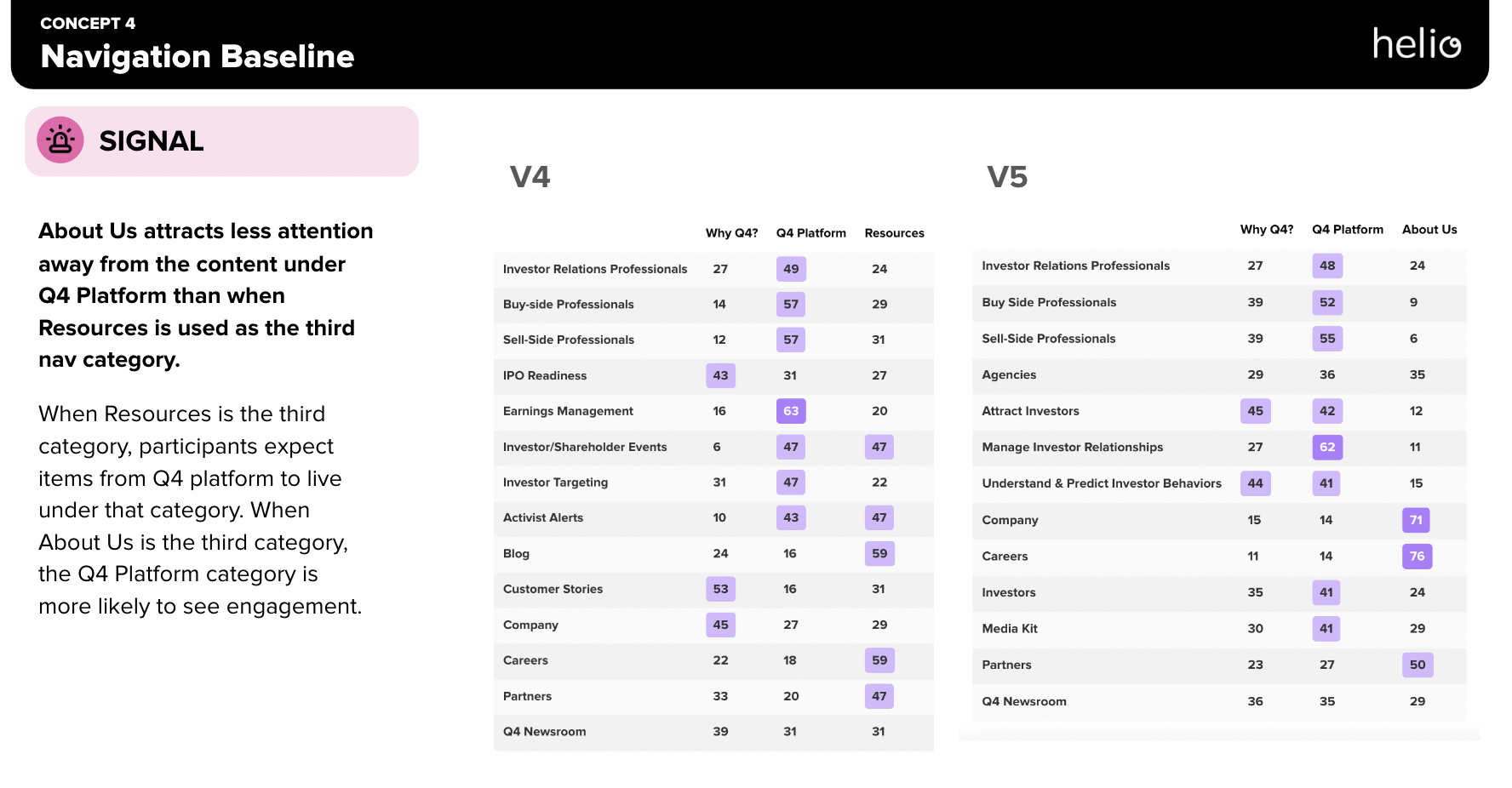The Ultimate Guide to Marketing Cloud Surveys
In today’s digital era, gathering customer feedback is essential for businesses looking to stay ahead. A marketing cloud survey is a powerful tool that can help you gain valuable insights into your customer’s preferences and opinions. This comprehensive guide’ll explore everything you need to know about marketing cloud surveys, from understanding their importance to setting them up, integrating them into your marketing strategy, and analyzing the results. So, buckle up and get ready to become a survey ninja!
🔩 The Nuts and Bolts:
- Direct Customer Insights Drive Business Success
Marketing cloud surveys offer a direct line to understanding customer needs and preferences, fostering data-driven decision-making. - Tailored Questions Enhance Data Quality
Balanced, relevant survey questions ensure high-quality data collection, which is pivotal for informed marketing strategies. - Strategic Timing Maximizes Engagement
Deploying surveys at critical customer journey points increases engagement and yields more accurate, actionable feedback. - Integration with Marketing Strategies is Crucial
Incorporating survey insights into broader marketing efforts allows for creating of personalized, effective campaigns. - Analytics Turn Data into Strategy
Analyzing survey data reveals patterns and trends, enabling businesses to adapt their offerings and messaging for better market fit. - Accessibility and Usability Enhance Response Rates
Designing surveys for broad accessibility and ease of use encourages higher participation rates, leading to more comprehensive insights. - Privacy and Security Build Trust
Upholding stringent data privacy and security measures in survey practices reinforces customer trust and compliance with regulations.
Understanding Marketing Cloud Surveys
Before diving into the specifics, let’s start by defining what marketing cloud surveys are and why they matter. In simple terms, a marketing cloud survey is a questionnaire conducted online, usually through an integrated software platform, that allows businesses to collect feedback from their target audience. These surveys can provide valuable insights into customer preferences, behavior, and pain points, enabling enterprises to make data-driven decisions and refine their marketing strategies. Now that we understand their importance, let’s look at the critical components of marketing cloud surveys.
Definition and Importance of Marketing Cloud Surveys
Sure, we mentioned it briefly earlier, but it’s worth emphasizing how crucial marketing cloud surveys can be for your business. In today’s competitive landscape, understanding your customers on a deeper level is paramount. Marketing cloud surveys allow you to gather firsthand insights and opinions directly from your target audience, allowing you to tailor your marketing efforts precisely. By leveraging customer feedback, you can create more personalized experiences, offer better products or services, and ultimately drive higher customer satisfaction and loyalty.
Moreover, marketing cloud surveys also help businesses identify trends and patterns in customer behavior. By analyzing the survey data, you can uncover valuable information about your target audience’s preferences, buying habits, and pain points. This knowledge can then be used to develop targeted marketing campaigns that resonate with your customers and address their needs. In a rapidly evolving market, staying ahead of the curve is crucial, and marketing cloud surveys provide you with the tools to do just that.
Key Components of Marketing Cloud Surveys
Now that we’re clear on the importance of this, let’s delve into the key components that make up an effective marketing cloud survey. First and foremost, you must consider your survey’s target audience carefully. Ensure you’re contacting the right people who can provide insights relevant to your business goals. Understanding your target audience’s demographics, interests, and preferences is essential in designing a survey yielding meaningful results.
Secondly, the questions you ask in your survey must be well-crafted and structured to encourage honest and thoughtful responses. Designing effective survey questions requires a solid understanding of your objectives and the information you seek. It’s important to balance open-ended questions that allow respondents to provide detailed feedback and closed-ended questions that offer specific options. By carefully crafting your questions, you can ensure that you gather the data you need to make informed decisions.
Lastly, the timing and placement of your surveys play a vital role in obtaining accurate and valuable data. Consider the customer journey and identify the touchpoints where surveys can be strategically placed. For example, sending a survey immediately after a purchase can capture valuable feedback about the customer’s experience with your product or service. Additionally, leveraging automation tools within marketing cloud platforms can help you schedule surveys at the right time, ensuring you’re not overwhelming your audience with too many requests for feedback.
By paying attention to these critical components, you can maximize the effectiveness of your marketing cloud surveys and gather actionable insights that drive your business forward. Remember, the success of your surveys relies on thoughtful planning, careful execution, and continuous analysis of the data collected. With the right approach, marketing cloud surveys can be a powerful tool in your marketing arsenal.
Make your design decisions count.
Subscribe to Design Under Pressure. Get insights, UX metrics, and tools for bold, informed design.
We respect your inbox. Just insights. No fluff. Privacy Policy.
Setting Up Your Marketing Cloud Survey
Now that we understand the significance of marketing cloud surveys and their key components, let’s explore the details of setting one up successfully.
Setting up a marketing cloud survey requires careful consideration and planning. It involves choosing the right platform, designing effective survey questions, and ensuring a seamless user experience. Following these steps, you can create a survey that provides valuable insights into your audience’s preferences and experiences.
Choosing the Right Platform for Your Survey
When choosing a platform for your marketing cloud survey, you’ve got plenty of options. Each platform offers unique features and functionality, so it’s important to consider your specific needs and goals.
One popular platform for marketing cloud surveys is SurveyMonkey. It creates easy survey with a drag-and-drop interface, allowing you to build and customize your survey quickly. SurveyMonkey also offers robust reporting capabilities, allowing you to analyze your survey results in real time. Additionally, it integrates seamlessly with other tools you use, such as customer relationship management (CRM) systems and email marketing platforms.
Another platform worth considering is Qualtrics. It offers advanced survey design options, including skip logic and branching, which allow you to create personalized survey experiences for your respondents. Qualtrics also provides powerful analytics and reporting features, enabling you to gain deep insights from your survey data. Moreover, it offers enterprise-level security and scalability, making it suitable for organizations of all sizes.
When evaluating different platforms, remember to consider factors like scalability, security, and ease of use as well. Scalability is important if you anticipate a large number of respondents or plan to conduct multiple surveys in the future. Security is crucial to protecting the confidentiality of your survey data and ensuring compliance with data protection regulations. Ease of use is essential for a smooth survey creation process, especially if you don’t have technical expertise.
Designing Effective Survey Questions
The success of your marketing cloud survey heavily relies on the quality of the questions you ask. When designing your survey, remember the goals and objectives you defined earlier.
Start by brainstorming the key information you want to gather from your audience. Are you interested in their satisfaction with your products or services? Do you want to understand their preferences and buying behaviors? Once you clearly understand your objectives, you can craft survey questions that will provide the insights you need.
It’s important to strike a balance between closed-ended and open-ended questions. Closed-ended questions provide respondents with predefined answer options, making analyzing and quantifying the data easier. They are useful for gathering quantitative data, such as ratings or multiple-choice responses. On the other hand, open-ended questions encourage respondents to provide detailed feedback and insights. They are valuable for capturing qualitative data, such as opinions, suggestions, and personal experiences.
Consider using a mix of both types of questions to obtain a comprehensive understanding of your audience’s preferences and experiences. For example, you could ask closed-ended questions like “On a scale of 1-10, how satisfied are you with our customer service?” and follow up with an open-ended question like “Please provide any additional comments or suggestions to help us improve our customer service.”
When crafting your survey questions, ensure they are clear, concise, and easy to understand. Avoid using jargon or technical terms that may confuse your respondents. It’s also helpful to provide clear instructions or examples when necessary, especially for more complex questions.
By designing effective survey questions, you can gather valuable insights to inform your marketing strategies and improve the overall customer experience.
Integrating Surveys into Your Marketing Strategy
Now that your marketing cloud survey is running, it’s time to incorporate it into your broader marketing strategy.
Timing and Placement of Surveys
Timing is everything when it comes to surveys. Consider when your target audience is most likely to engage with your survey. For instance, if you’re running an e-commerce business, sending a survey shortly after a purchase can yield valuable insights. Additionally, think about the placement of your survey. Make it accessible and unintrusive, ensuring it doesn’t disrupt the user experience. Strike a balance between visibility and non-intrusiveness to maximize responses while respecting your audience’s experience.
Using Survey Data to Inform Marketing Decisions
Collecting survey data is one thing, but leveraging it effectively is another. Analyze the responses to identify patterns, trends, and correlations. Look for common pain points or areas for improvement. Use these insights to inform your marketing decisions, such as refining your messaging, optimizing your product offerings, or enhancing customer service. By making data-driven decisions, you can simultaneously fuel growth and improve customer satisfaction.
🚀 If you’re using Helio
Specific key metrics can provide valuable insights into your audience’s opinions and behaviors.

By making data-driven decisions, you can simultaneously fuel growth and improve customer satisfaction.
Analyzing and Interpreting Survey Results
Now that you’ve gathered a treasure trove of survey data, it’s time to understand it all.
Key Metrics to Monitor in Your Survey Results
Specific key metrics can provide valuable insights into your audience’s opinions and behaviors when analyzing survey results. Monitor metrics such as response rate, satisfaction score, Net Promoter Score (NPS), and conversion rates. These metrics can help you gauge your survey’s success, identify improvement areas, and benchmark your performance over time.
Making Sense of Survey Data
All those numbers and responses can be overwhelming, but fear not! You can turn raw data into actionable insights with the right tools and techniques. Utilize data visualization tools and techniques to present your findings clearly and impactfully. Look for trends, patterns, and outliers in your data to uncover hidden insights. Communicate your findings effectively to key stakeholders, ensuring that your survey results drive meaningful organizational change.
Best Practices for Marketing Cloud Surveys
To ensure the success of your marketing cloud surveys, it’s important to follow best practices and address potential challenges.
Ensuring Survey Accessibility and Usability
Ensure your surveys are accessible to all respondents, regardless of their abilities or devices. Consider factors like screen size, assistive technologies, and mobile responsiveness. Keep your survey design simple and user-friendly, minimizing potential participation barriers.
Maintaining Data Privacy and Security in Surveys
Data privacy and security are of the utmost importance when marketing cloud surveys. Clearly communicate how you will handle and protect respondents’ data and ensure compliance with relevant data protection regulations. Invest in secure platforms and encryption protocols to safeguard sensitive information. Earn your audience’s trust by being transparent about your data practices and respecting their privacy.
With this ultimate guide to marketing cloud surveys, you’re now equipped with the knowledge and strategies to gather valuable insights from your audience. Remember, the key to success lies in understanding your customers and using their feedback to drive meaningful change within your marketing efforts. So start creating your marketing cloud survey today, and unlock a world of valuable information!
Marketing Cloud Survey FAQs
A marketing cloud survey is an online questionnaire tool integrated within a software platform, enabling businesses to collect targeted feedback from their audience. This tool helps understand customer preferences, behaviors, and pain points for strategic decision-making.
Marketing cloud surveys are crucial because they provide firsthand insights from the target audience, allowing businesses to personalize marketing efforts, offer better products/services, and drive customer satisfaction and loyalty. They also enable the identification of customer trends and behaviors.
Effective marketing cloud surveys include a well-defined target audience, carefully crafted questions, and strategic timing and placement. These components ensure valuable, actionable data collection while maintaining a positive user experience.
Setting up involves choosing the right platform (like SurveyMonkey or Qualtrics), designing survey questions to gather targeted insights, and ensuring the survey is user-friendly. Selecting a platform depends on your specific needs, including scalability, security, and integration capabilities.
Integrate insights by analyzing survey data to inform marketing decisions, tailoring campaigns based on customer feedback, and identifying areas for improvement. Effective integration involves aligning survey findings with marketing objectives for more personalized customer engagements.
Best practices include ensuring survey accessibility and usability, maintaining data privacy and security, and carefully timing the distribution of surveys to maximize engagement. These practices help improve response rates and secure valuable, trustworthy data.
Analyze results by monitoring key metrics such as response rate and satisfaction scores and using data visualization tools to identify trends and patterns. Interpreting these results involves translating data into actionable insights that can guide marketing and business strategies.



